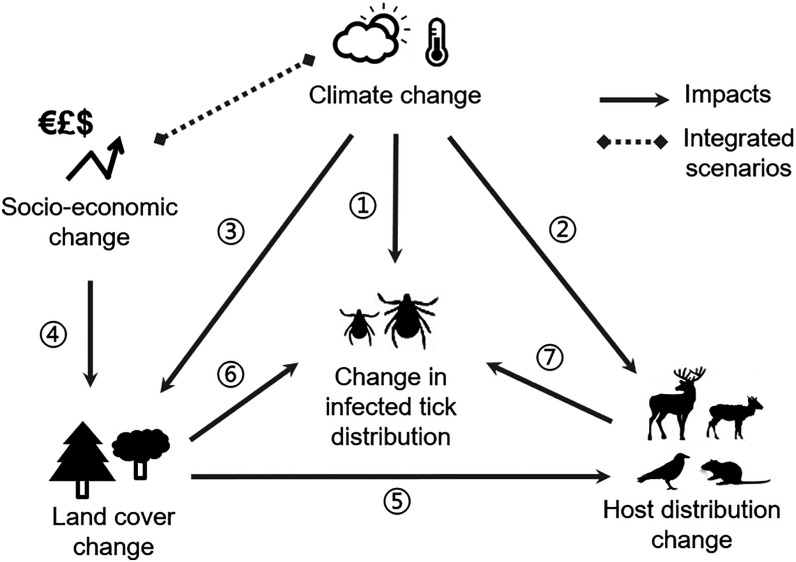Figure 1.
Theoretical framework and key drivers of Lyme disease risk dynamics. Climate change: (1) Climate influences tick phenology and distribution of ticks; (2) climate suitability influences distribution of tick hosts (e.g., deer, rodents, and birds); (3) climate influences growth of plant species and profitability of land, driving land-use/cover change. Socioeconomic change: (4) Socioeconomics influence the demand and preferences for how land is used, which affects conversion between land cover types. Land cover change: (5) Land cover influences host type and abundance as well as microclimate and, hence, (6) distribution of ticks. Host distribution change: (7) Availability of hosts influences tick survival and pathogen transmission.

